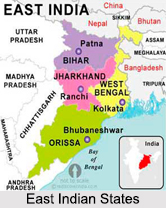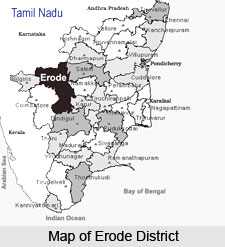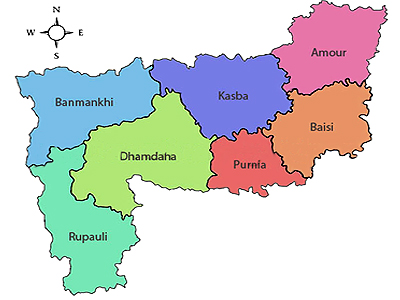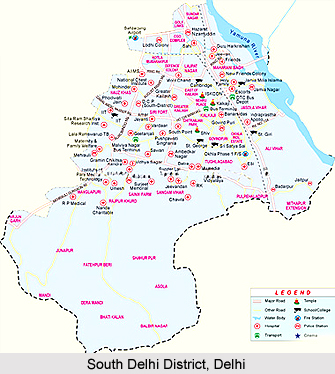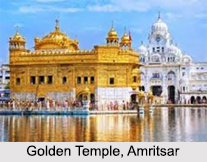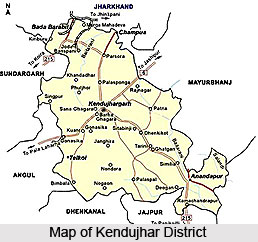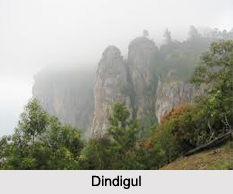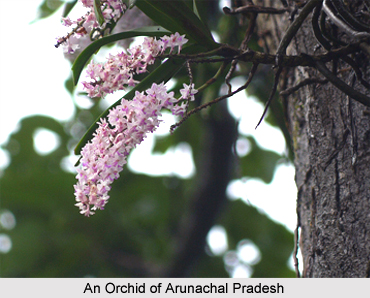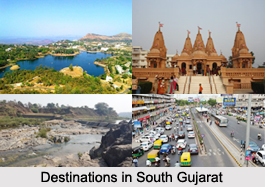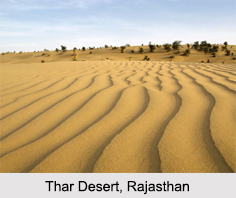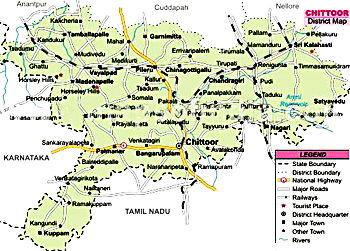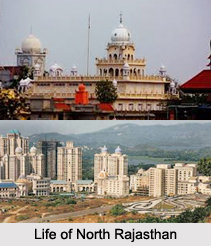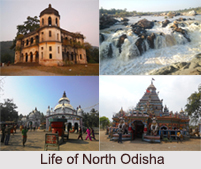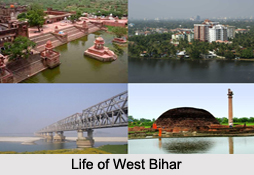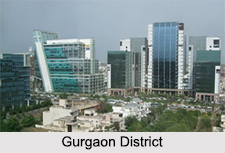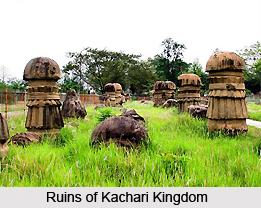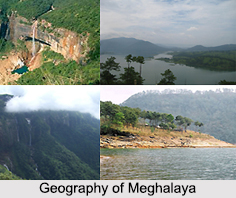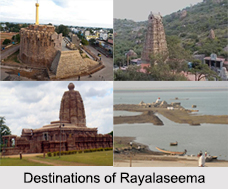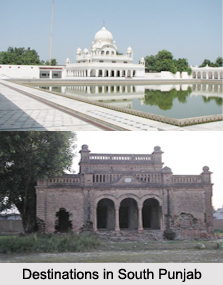Introduction
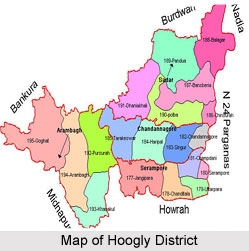 Hooghly District with its headquarter at Chinsurah is within the Burdwan subdivision of West Bengal. In Bipradash Piplai`s "Manasamangal" and in the Muslim account Ain -I -Akbari the name of the place has been mentioned for several times, which indicates that the name "Hooghly"does not have foreign origin. As far as the history concerns, the district derived its name from "Hogla", a tall reed grows along the banks of the river and the marshy lowland.
Hooghly District with its headquarter at Chinsurah is within the Burdwan subdivision of West Bengal. In Bipradash Piplai`s "Manasamangal" and in the Muslim account Ain -I -Akbari the name of the place has been mentioned for several times, which indicates that the name "Hooghly"does not have foreign origin. As far as the history concerns, the district derived its name from "Hogla", a tall reed grows along the banks of the river and the marshy lowland.
History of Hooghly District
Hooghly District had been colonized by different civilization from the pre historic times. However the history of the region was recorded from the time it existed to be the kingdom of the Suhmas, a valiant tribe who were the juxtaposition of the Angas, Vangas and Pundras. In Mahabharata, mention of these tribes has been made. The reference of the Suhmas in Mahabhasya of the 2nd century B.C clearly designates the existence of the region in the 2nd century B.C. In the medieval times, after the Battle of Plassey, when Mir Kasim, according to an agreement donated the zamindari areas of Burdwan, Midnapore and Chittagong to the British East India Company, the English rose into power. Having all the Zamindari areas of Bengal in clutch, it became somewhat effortless for the British to establish their political hold. The British, with the aim to install a firm hold, drive away the other races, formerly controlling Bengal. Consequently the areas around the Hooghly district, which was once used to be a transaction seat for the Portuguese and the Dutch, continued to exist within the territory of the British.
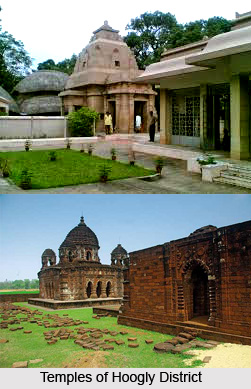 Hooghly District had been colonized by different civilization from the pre historic times. However the history of the region was recorded from the time it existed to be the kingdom of the Suhmas, a valiant tribe who were the juxtaposition of the Angas, Vangas & Pundras. In Mahabharata, mention of these tribes has been made. The reference of the Suhmas in Mahabhasya of the 2nd century B.C clearly designates the existence of the region in the 2nd century B.C.
Hooghly District had been colonized by different civilization from the pre historic times. However the history of the region was recorded from the time it existed to be the kingdom of the Suhmas, a valiant tribe who were the juxtaposition of the Angas, Vangas & Pundras. In Mahabharata, mention of these tribes has been made. The reference of the Suhmas in Mahabhasya of the 2nd century B.C clearly designates the existence of the region in the 2nd century B.C.
In the 3rd century B.C, when Ashoka of the Maurya dynasty rose into power and augmented his expedition, the major part of the region came under his sway, leaving almost none in the control of the Suhmas. The jurisdiction of Ashoka includes the whole area of Bengal, along the Gangetic plains, which even extends upto Tamralipta. However the region with the rest of Bengal was conquered by the successful campaign of Samudragupta and was attached in the territory of the Gupta Empire in the 4th century B.C
Being a part of the magnificent Guptas for several centuries, the region suffers a set back and immense loss when Sasanka, the vigorous king of Gaur expedite against the former princes and conquered Bengal, covering the region of present Hooghly. But Sasanka could maintain his kingdom, not for long and in the second half of the same century, Siladitya Harshavardhana became the domineer of whole area of Bengal. But the northern and eastern part of the present Hooghly was under the control of the Sena Kings, powerful in Bengal at that time.
The region was under the influence of the indigenous rulers till the 13th century when the Muslim invaded Bengal and established their supremacy suppressing the native rulers.
The Muslim supremacy was followed by the gradual uprising of the colonial forces in all over India, including the vast tract of Bengal. The Portuguese, Dutch and French, Danes and the English establish "Kuthis" in the district to serve the purpose of the business. It was the Portuguese, who build up the first port at the bank of the river Bhagirathi-Hooghly at the middle of the 16th century. The district progressively transmuted as the "window" for the foreign settlers. The trading race found the place profitable for carrying out their business allover the country, hence settled here with the latent desire to capture the political power. Chandernagore subdivision was under the French since 1696 to 1950 and the Chinsurah and Serampore sub division were under the influence of the Dutch and Danes respectively.
After the Battle of Plassey, when Mir Kasim, according to an agreement donated the zamindari areas of Burdwan, Midnapore and Chittagong to the British East India Company, the English rose into power. Having all the Zamindary areas of Bengal in clutch, it became somewhat effortless for the British to establish their political hold. The British, with the aim to install a firm hold, drive away the other races, formerly controlling Bengal. Consequently the areas around the Hooghly district, which was once used to be a transaction seat for the Portuguese and the Dutch, continued to exist within the territory of the British.
For administrative conveniences the district of Burdwan was split into two parts in 1795.The northern division being called Burdwan and the southern part came to be identified as Hooghly. The Bengal Presidency was divided into 14 subdivisions at that time of which Hugli was one. Hooghly became separate Collectorate in the year 1822 and Mr.W.H Belli was appointed as the first Collector. However the Collectorate came to be functioned as the separate district only after the independence.
Demography of Hooghly District
Hooghly District had population of 5,519,145 of which male and female were 2,814,653 and 2,704,492 respectively. Hooghly District population constituted 6.05 percent of total Maharashtra population. There was change of 9.46 percent in the population compared to population as per 2001. In the previous census of India 2001, Hugli District recorded increase of 15.77 percent to its population compared to 1991. The population density of Hugli district for 2011 is 1,753 people per sq. km. In 2001, Hooghly District density was at 1,601 people per sq. km. Hooghly District administers 3,149 square kilometres of areas. The average literacy rate of Hugli in 2011 was 81.80 compared to 75.11 of 2001. If things are looked out at gender wise, male and female literacy were 87.03 and 76.36 respectively. Total literate in Hugli District were 4,078,388 of which male and female were 2,211,777 and 1,866,611 respectively. In 2001, Hugli District had 3,333,988 in its district. The language of the majority is not proper Bengali, rather the dialect is here known as metropolitan Bengali. Along the western tract of the Darakeswar River, the language is somewhat an amalgamation of the dialect of Bankura and the Rari of Bardhaman. A limited amount of natives mainly in the Arambagh subdivision speak Hindi and Urdu. In the interior parts, Santali spoken communities are also found.
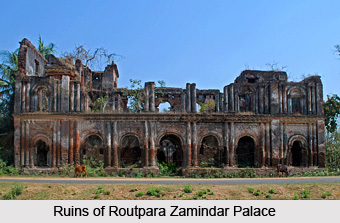
Education of Hooghly District
The economically developed district has an unyielding foundation of education since the dawn of history. In ancient times, Sanskrit was the most prominent subject and it was obligatory to know Sanskrit .To teach the language once there was a profusion of "tolls", generally known as "Chatuspathi". In the primitive days, when there was no well- built school building, students came to the "tolls" to have their education. Therefore the development of education in the district is not a sudden outcome. Presently the district, Hooghly shares a prominent place in the field of education in the state. There are about 2993 primary schools and 548 secondary schools, 139 higher secondary schools and madrashas all over the district. Several steps had been implemented to set up schools in the villages in order to wipe out illiteracy from the district. Apart from the Government undertaking schools, some private concerns and religious institutions have also come up and put up several convents, which has been, directly affiliated to the I.C.S.E and C.B.S.E. In Hooghly, there are 2 general colleges, offering the courses of B.A, B.S.C and B.Com, of which mention may be made of Hooghly Mohsin College at Chinsurah and Serampore College at Serampore. Due to the escalating prosperity of the software firms in the region, the demand of the IT trainers are being increasing. Hence the need of technical and vocational training has been emphasized. There is presently one engineering college providing degree courses and 4 Engineering colleges providing diploma courses. However some teacher`s training institutions have been booming up in Hooghly to supplement the need of the teachers for the schools. Presently some NGO`s have become active enough to propagate education among the backward classes. The scenario of education has been gradually changing with the economic situation of the district.
Culture of Hoogly District
The district of Hooghly offers a rich cultural heritage since the prehistoric times. The region of Hooghly existed even when there was no separate state called West Bengal. The region, as has been inhabited by several generations for years, it inherited a diversified cultural heritage. However the cultural tradition in Hooghly mainly follows the Hindu custom. The Jagadhatri Puja is the principal festival here, which was even elevated to the status of Durga Puja in Kolkata, clearly represents the Hindu custom here. The uniqueness of this Puja is the height of the idol and intricate and attractive lightings. Makar Sankranti was another festival of equal importance. It was the traditional beliefs that the prayers of those are fulfilled who take dip in the Tribeni Sangam. Mahesh is the principal fair held on the occasion of "Ratha Yatra". Printing Machine was first established in the district in the year of 1778 and the first Bengali book (Bengali version of A Grammar of the Bengali Language) was printed here. Thus the district is the onlooker of many first establishments, hence historically significant. Moreover the buildings of Hooghly are the lively embodiments of the ancient culture and tradition.
Thus Hooghly is just after Bardhaman, which is economically and culturally affluent with a strong base of education.
Tourism of Hooghly District
Tourism of Hooghly District deals with the tourist spots like Bandel Church, Kamarpukur, Debanandapur, Hangseswari Tample, Nritya Gopal Smriti Mandir, Suakhal and Moyur Mahal, Jafarganj Cemetery, Buddha Temple of Deulpara, Chandernagore Church, Underground House, Nandadulal temple and many others
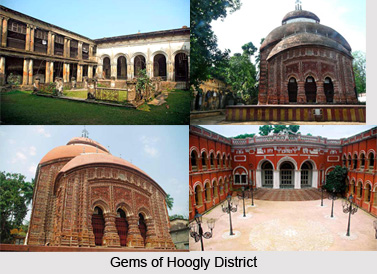 Tourism of Hooghly district consists of a large number of terracotta temples of Routpara, Dasghara and many other places. Hooghly district existed as a trading centre in the past having almost an urban set up. As Hooghly has been colonized by indigenous and the alien equally, the district has been elevated to the status of a heritage place. The relics of the foreign settlers like Portuguese, Dutch and the English represent the multi-ethnic culture of the land.
Tourism of Hooghly district consists of a large number of terracotta temples of Routpara, Dasghara and many other places. Hooghly district existed as a trading centre in the past having almost an urban set up. As Hooghly has been colonized by indigenous and the alien equally, the district has been elevated to the status of a heritage place. The relics of the foreign settlers like Portuguese, Dutch and the English represent the multi-ethnic culture of the land.
Antpur
Antpur, about 62 km away from Kolkata once was a zamindari of Krishnaram Mitra. The special attraction of the place is the profuse concentration of the temple, built probably in 18th century. The prominent among them is the "atchala" temple, which houses the family idol of Radha- Govinda. The structure of the temple is also a significant attraction for the tourist. The "atchala" structure guards a "charchala" mandap, in front known as "Jagamohan", placed on a high pedestal, approached by the stairs. The terracotta panels around the walls of Jagamohan, depicting the story of the epics are another key attraction about the temple. The "Chandimandap" is an object of interest and it is the only one of its structure extant in West Bengal. Antpur is also famous as the village home of Baburam Ghosh (later known as Swami Premananda) where Swami Vivekananda and eight other disciples of Sri Ramakrishna took a vow of "Sanyaas".
Bandel Church
The remnants of the Church and Monastery in Bandel built around 1660 by the colonizer are the replica of the Portuguese settlement here. Bandel Church is the oldest Church in West Bengal. Bandel, a heritage place representing the diversified culture attracts tourists throughout the year.
Chandernagore
Chandernagore on the bank of river Hooghly, which was once a French Colony, fetches tourist mainly for its scenic beauty. The Churches, convents and the residences of the French Administrator are the interesting buildings here left by the French.
Kamarpukur
The key attraction of Kamarpukur roots from the fact that it is the birthplace of Shree Ramakrishna. Consequently the place is invested with immense religious interest. The Ramkrishna Mission has erected a memorial temple here. The annual celebration of the birthday of Shree Ramakrishna is the principal festival of the village, which fetches a large amount of pilgrims.
Jairambati
Jairambati, in close proximity of Kamarpukur is the native land of Maa Sarada, consort of Shree Ramakrishna is another principal religious site. The mass of pilgrims constitutes the vast chunk of tourist in the region.
Tarakeswar
Tarakeswar is the renowned pilgrimage and the greatest centre of the Shaiva sect in West Bengal. The principal attraction here is the "atchala" temple of Lord Shiva, commonly called "Baba Taraknath" with a "natmandir" in front. The shrines of the Goddess Kali and Lakshmi- Narayan pivots round the temple of Taraknath. Dudhppukur, a tank to the north of the Shiva Temple is believed to fulfill the prayers of those taking dip in it. It attracts pilgrims on the occasion of "Sivaratri" and "Gajan". In the month of Sravana celebration are held in every Monday. Tarakeswar temple at the same time of fetching the pilgrims also enticed a large variety of tourist for its beautiful structure.
Chinsurah
Chinsurah, a Dutch Settlement in the since 1656 till 1850 at Hooghly, is famous for the Fort Guatavus Church, three barracks and the old tombs, which bears the specimen of the past days. Another worthy site is the Hoogly Imambara, constructed by Hazi Mohammed Mohsin in the year 1836.The gateway of the building is flanked with the lofty minarets and the doors are decorated with the lines from the Koran and the interiors has rich carvings and inlaid marble motifs.
Serampore
Erstwhile Fredricknagar presently identified as the Serampore was the seat of missionary activity from 1793 to 1834. As a Danish settlement it owes a significant place in the history of Bengal. The house of Danish Governor, the Roman Catholic and the St. Olaf Church still stands here as the testimonial reference of the Danish settlement here. The museum of the Serampore College is of enormous interest. Hooghly District is a dual blend of cultural and religious heritage, which draw a vast crowd towards it.
Economy of Hooghly District
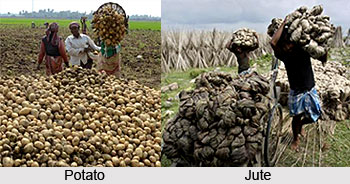 Hooghly is specially known as an economically developed district in the state. By exploiting the modern technology to its fullest the district in recent times witness the burgeoning growth of industry and agriculture.
Hooghly is specially known as an economically developed district in the state. By exploiting the modern technology to its fullest the district in recent times witness the burgeoning growth of industry and agriculture.
Though the district is essentially industrial, agriculture shares no less importance in building the economic set up of the district. The regional topography, with an average elevation of about 200 meters, drained by river Hugli and Damodar offers a favorable landscape for agriculture.
About 70% of the population derives their living from the agriculture and therefore Hooghly holds one of the remarkable positions in the arena of agriculture. The continuous increase of pressure on the land, due to the industrial development, the agricultural families became the victims of loosing the land. The farmers therefore are engaged in the cultivation of the major crops making the fullest utilization of the available land and the natural resources. Though rice is the principal crop, it only supplies the local need of the district.
The agriculture economy of Hooghly mainly depends on the cultivation of the cash crops like jute, potato, and vegetables. Orchard plantation holds a prominent position in the economy of the district. Jute is however prominent among the cash crops. After independence the major area cultivating jute falls under the area of Bangladesh. However in West Bengal, it was only Hooghly where the jute cultivation makes a progressive advancement. Hooghly is the hub of the jute trade in West Bengal and even in India.
Vegetable is the primary crop in the blocks of Haripal, Singur, Chanditala Polba and Dhaniakhali. The vegetables are grown here in the relay system throughout the year. Potato, though cultivated in the district, much of its output are used for the domestic purpose. Tarakeswar is a largest producer in the production of potato, which is even more than the average production of potato in the state. Therefore the domestic economy is completely served by the products produced locally.
However, in the recent years the agricultural scenario of Hooghly has undergone an effective change. The response of the tenant farmers to the upcoming market of Kolkata has made this region a field of diversified commercial agriculture. The fertility of the western part of the river Hooghly was evident from 1850 but became more pronounced from the second half of the 19th century. By adopting scientific measures seizable amount of unutilized land has been brought under cultivation. Those lands incapable of producing rice are used for the orchard plantation, which constitutes a major part of export. With the instrument of "Land Development agenda", the government has been initiating plans by which the intensity of the used land is increased and the increasing use of scientific technology, thereby supplementing the agriculture growth. The utilization of the modern expertise augments the agriculture growth, thereby serving the economy.
Hooghly was once the industrial hub of Bengal. Presently, though it does not have the past glory, yet, it surely shares a significant position in the industrial panorama of West Bengal. Due to its advantage of raw materials, skilled laborers, easy finance, power and having proximity to Kolkata, Hooghly is becoming the key site for the entrepreneurs to set up industries. Hooghly is becoming the principal center for the large, medium and the small-scale industries.
There had been a rapid expansion in the jute industry in India around the wide belt of the Hugli. From one mill in 1855, there are about 59 mills in the first decade of the 20th century. Jute industry and Hooghly was almost inseparable from each other and the largest export of the jute goods in India are made from Hooghly.
However, with the decreasing demand of the jute products, the engineering industries have crept over the industrial scenario of the district. "Hind Motor" is the famous automobile industry of the district, which supplies maximum of the automobile parts in Bengal. Major heavy industries are springing up in the region, which at the same time supporting the domestic purpose also export the surplus, thereby supporting the country`s economy.
Hooghly is becoming the software hub of Bengal. The booming progress of the software industries has changed the situation of industrial atmosphere of the district. Recently the industrialists like Ratan Tata have set up industry in the district. The Nayachar subdivision of Hooghly is proposed for the chemical hub.
The growing industries of the district provide ample scope for the employment. The industries at the same time providing employment also account for the large quantity of export. Bandel Thermal Power Station in Tribeni, under Calcutta Electric Supply Corporation provides electricity to Serampore, Seoraphuli, Uttar Para, Baidyabati, Mankundu, Bhadreswar and in some parts of Rishra.
Hence the agriculture and industry both constitute very basis of the district`s economy.
